Introduction
PPE Vendor Inc. is the proposed business name for the PPE vendor machine business that t has a strategy to provide the potential market with the services needed for the protection of employees working especially in the oil and gas industry in the UAE and any other market that might arise (Randeree, Mahal & Narwani, 2012).
An investigation into the market needs for the PPE Vending Machines was conducted to determine the attractiveness of the product in the UAE based on an analysis of the competitors, what they have to offer and the unmet customer needs and expectations (Wei, 2010).
Market needs
An investigation into the market needs for the PPE Vending Machines was conducted to determine the attractiveness of the product in the UAE based on analysis of the competitors, what they have to offer and the unmet customer needs and expectations ((Randeree et al., 2012). In addition, the market needs analyses were conducted to determine opportunities and the possible strategies to optimise the opportunities and create a market share for the sale of the PPE products.
Figure 1
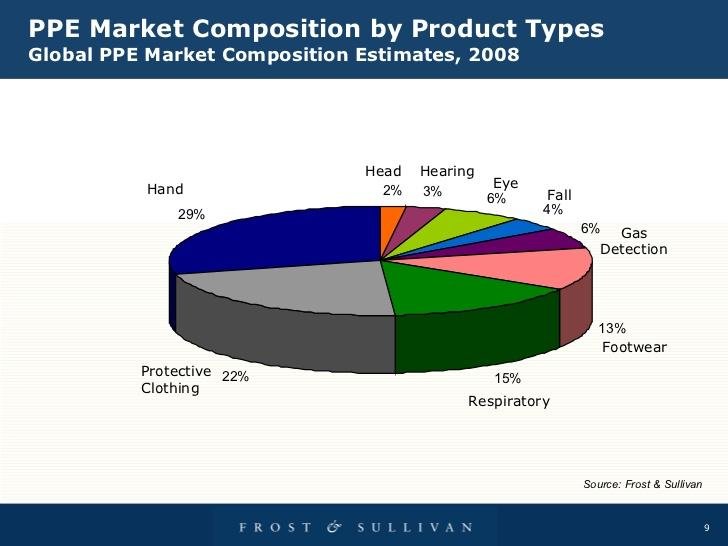
An investigation of the market need shows that the demand for customised PPE Vending Machines exists among the industries operating in the UAE especially the heavy oil and gas and other upstream industries because of the unique safety needs in each of the industries (Jaffar, ElKhatib, Hesson & Radaideh, 2007). In addition to that, government regulations have caused further stimulation in demand because of the mandatory minimum safety requirements for the companies to meet for the basic health needs and expectations of the employees.
The companies are obligated to protect the people from injuries and other adverse effects that might affect their health in the working environment. The rationale is that the government has outlined mandatory requirements for people working in the government sectors and particularly in the heavy industries including oil and gas industry to use personal protective clothing has further fueled demand for the personal protective equipment.
The results have been an exponential growth of the market for the equipment in the government and private sectors. It is important to note that for a company to successfully successful cut a niche of the market, the market size is determined by the presence of demand as is evident in the construction, oil and gas, chemicals, manufacturing, transportation, and food industries in the UAE (Jaffar et al., 2007).
The uniqueness of the business is that the proposed plan is targeting a new and already existing market in the UAE and the Middle East region. The major volume of trade will come from the industries that use PPE Vending Machines more especially the oil and gas and the construction industries that have been on a dynamic growth path employing numerous people working in hazardous environments making the vulnerable to minor and major injuries which often lead to the loss of life.
Competition and availability of similar products/services
Competitors are from the companies operating on the international market environment because no indigenous company has been constituted to carry out the business in the UAE’s local market. In addition, most of the companies operate from the USA, China, France, and Germany and are not customised to operate in the local environment with its unique cultures and environmental needs.
For instance, the Tempshield Inc. is from the USA, Ecosystems Ltd. is from China, and DIN CERTCO GmbH from Germany (Al-Khouri, 2012). The factors that might restrain the growth of the company include price pressure, insufficient enforcement of the requirements of the business, automation, economic downturn especially the decline in oil prices, and the cost of conserving the environment.
Figure 2
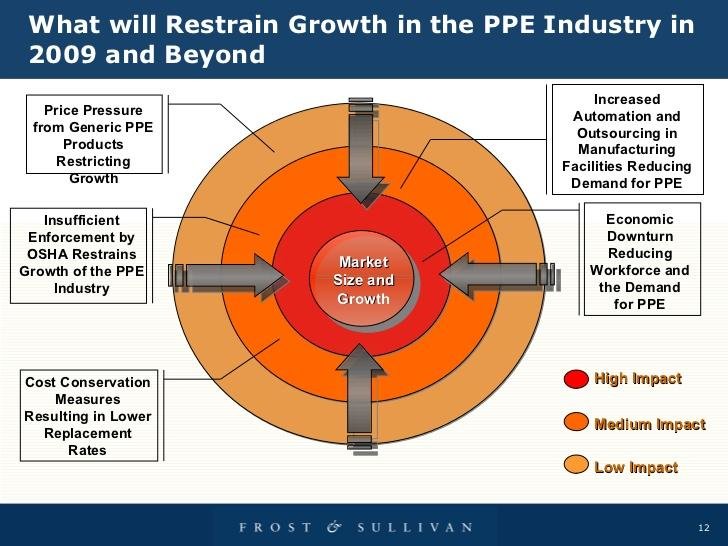
Uniqueness of the proposition
A unique selling proposition is defined as the “factor or consideration presented by a seller as the reason that one product or service is different from and better than that of the competition” (Al-Khouri, 2012). The definition is in context of what the PPE Vending Machine business stands for and what makes it unique because of the special offering to the market to save the customers time and money in accessing the products in the local market.
An investigation of the uniqueness of the proposition shows that a significant market exists for PPE Vending Machines because they have been designed with unique properties that address the health and protection needs of the customers, making the technology 100% useful. In addition, the products have unique physical characteristics, are designed to protect the environment especially for the people working in the heavy industries, and a big size of the market are integral elements that make the business plan unique.
The business plan provides a unique access to the market by creating and providing unique selling points for the products that contribute significant earnings to the proposed business. In theory and practice, the study shows a wide range of benefits that include the ability of the management to control supplies of the protective gear to the employees.
To improve the effectiveness of the sales and promotion of the PPE Vending Machines, employees will be guaranteed the right amount of protective products that could enable the employees to effectively perform their duties.
Table 1
Table 1 shows a summary of the issues that makes the proposition unique by focusing on the features and the benefits that the vendor and the customer will gain by selling and using the PPE machine respectively. For instance, the opener of the machine can monitor accurately the movement of the safety items without a manual intervention because the system integrates a software solution to the problem of controlling the movement of the items.
In addition to that, the machine offers point a point of use access to enable the employee access a product when and when needed to avoid the time wasted in moving about to access the machine.
Appeal to society and consumers
The functions of the machines and the underlying benefits could have a significant impact on the positive perceptions of the customers to buy and implement the PPE Vending Machines program. Typically, the attractiveness is based on the effectiveness of the company to reduce waste, reduce consumptions of inputs that are necessary to provide customers with a secure working environment and personal protection leading to greater accountability and enhanced traceability.
Another key area that has a positive impact on the perceptions of the company include the increase in productivity by reducing staffing requirements, reducing the travel time required for the movements within the firm, and enabling people to work nearer to the production line.
The main product/services
The main product to be sold in the target market is the PPE Vending Machines. The machine is used to “dispense gloves, masks, hard hats, goggles, and other PPE items the employees rely on to perform their jobs safely and efficiently”.
The chart in figure 1 shows the demand by product types and market composition which are represented by demand for different types of protection required according to the hand (29%), head (2%), hearing (3%), fall (4%), gas detection (6%), footwear (13%), protective clothing (22%), and eye (6%).
The proportions by percentage of the specific protection required for each area demonstrates the specific areas and services to be provided using the machines and the gap to be filled in the market which underlies the rationale for the marketing plan for the PPE Vending Machines. Figure 3 below shows one of the variety of PPE vending machines that are proposed to be sold in the marekt according to the business plan.
Figure 3
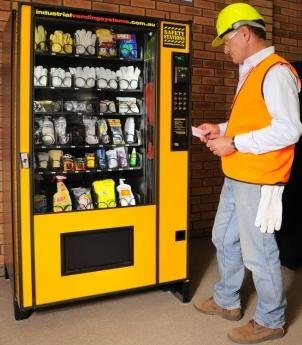
Identify 4-7 steps necessary to complete the project
The steps necessary to ensure a success:
- Defining clear objectives
- The company will endeavour to increase the volume of sales of the PPE vendor machine by 15% each year
- Double the revenue in each year
- Increase the market share in the UAE and the greater Middle East by 10 % each year.
- Conduct a market analysis for the PPE vendor machines
- Identify the target market opportunities
- Write a business plan
- Choose an appropriate business location
- Determine the legal structure of the business
- Register and start the business (Westwood, 2013).
Identify supply chain and possible partners
The supply chain is a strategy is the systematic coordination of the functions that are necessary to ensure upstream and downstream fulfillment of the supply of product according to the demand in the market by integrating key business processes to create value for the customers.
The company intends to create a robust supply chain system that will enable collaboration of the supply chain activities among the manufacturers of the PPE machines to ensure the products reach the market when and where needed. All the activities will be planned and managed from a centralised location in the UAE because the company is new and small.
All the logistics activities and information flow will be managed to ensure to ensure customer satisfaction to enable the business s gain competitive advantage in the local UAE market. A wide range of products will be made available in the market and will be sourced from different vendors and partners.
The supply chain map in figure 4 shows the best strategy and supply lines the company will use to get the PPE machines to the market at the right time. The supply chain system is a conceptualised flow of the PPE vendor machines from the manufacturer to the customer through third party transporters into the UAE market that will be adopted by the PPE Vendor Inc. if the business plan will be successful.
Figure 4
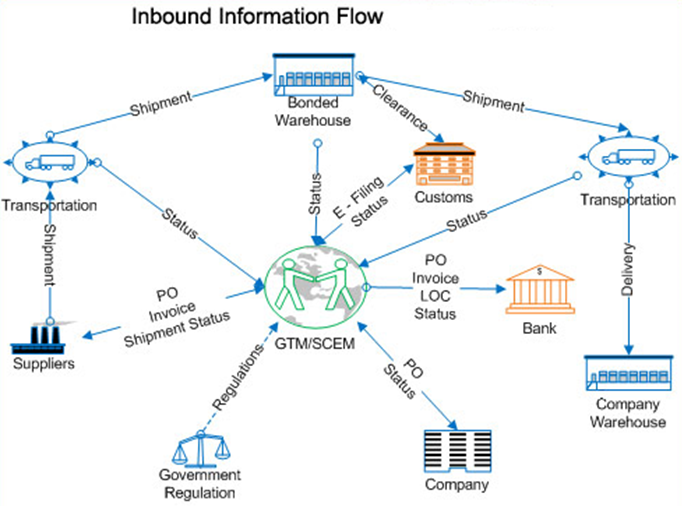
The entire supply chain in figure 4 was recommended for adoption because it clearly shows the inbound information flow and the status of each item in the supply chain management system. The transportation, shipment, delivery, invoice status, e-filling, and government regulations that govern the procurement of products from outside of the country are all linked up in the supply chain map.
Typically, the supply chain decisions begin at the source where the machines are manufactured and sourced by the PPE Vendor Inc., company for onward marketing and distribution. Based on information obtained from the government about the standard requirements, duties, custom regulations, lead times, transportation costs, and compliance requirements, the company decided the will use the model illustrated in figure 4 to reach the local and international markets.
On the other hand, the possible partners in the business include the Silkron® Smart Vending Solution – Vendron Company, which provides automated machines at reduced costs and improved efficiency.
Legal / environmental analysis
SWOT analysis
In theory, the strengths, weaknesses, opportunities, and threats (SWOT) provide the direction to ensure that the company exploits its strengths and opportunities for competitive advantage (Helms & Nixon, 2010).
The strengths, weaknesses, opportunities, and threats are analysed in the table. The main strengths are that the company will provide customised products to address the local market because of a high demand to protect people working in various environments (Helms & Nixon, 2010). The main threats are the companies from the external environment wanting to penetrate the business environment in the UAE.
PESTEL
The PESTLE study was conducted to evaluate the macro environmental factors necessary to scan the environment and determine the extent of the government involvement in the business, and the economic factors such exchange rates and inflation that could affect the growth of the business (Leonard, 1996).
Other issues include the social factors including the cultural aspects that influence the business, and technological factors that determine research and development and automation of the services offered using the machines (Yüksel, 2012). In addition, the demographic, legal, and environments factors with unique implications on the performance of the proposed business.
Political
The UAE’s political environment is stable and provides a secure environment for doing business as most of the neighbors are engaged in civil wars and a lot of unrest that is not favorable for doing business. The country is recognized as one of the most stable politically because the leadership is tolerant, open, and has a good acceptance of the opinions of others.
Typically, the “UAE has become a model of political stability at the regional and global levels, and Benchmarks and the metrics issued by international institutions have repeatedly confirmed this” (El-Sayegh, 2008). Bank of America Merrill Lynch, “for instance, recently released a 25-point index of politically stable countries in Eastern Europe, Middle East and Africa where point one referred to the least resilient country against political risks while point 25 indicated the most immune.
The UAE ranked three, securing 23 points, among 80 countries included in the study” (El-Sayegh, 2008). The rating has placed the country in a position that makes it attractive for local and external investors into the politically stable market.
Economic
The UAE’s economy is ranked as the most dynamic and stable in the Middle East, leading that of Saudi Arabia. Over 71% of the GDP is from non-oil sources making the economy even stable given the rapidly declining oil prices. Despite the “diversification of the economy from oil, the country’s economy is heavily dependent on revenue form oil” (El-Sayegh, 2008).
In 2012, it was a gross domestic product (GDP) of $377 billion (AED1.38 trillion) was estimated to have been achieved with imports totaling over 212 billion dollars. The latest estimates show that the “federation had an economic freedom score of 7.14 making it to be ranked 28th in doing business in the world and ranked second in the Middles East among 15 countries” (El-Sayegh, 2008).
Here, the “economic freedoms include advancements in the management of public spending and market openness. Significant declines in property rights and freedom from corruption have prevented an overall gain, but the economy has achieved its highest economic freedom score in a decade in the 2014 Index” (El-Sayegh, 2008).
In conclusion, when an economy has a good rating, the feasibility of doing business becomes better and it facilitates the movement of goods which increase the revenue earned and return on investment.
Social
The social environment is defined by the need to ensure that the current or prospective market is able to readily accept the products supplied to the market to ensure the safety and health of the employees (Peter, Olson & Grunert, 1999). The cultural issues have to be compatible with the marketing needs of the customers and when supplied with the PPE vendor machines, the target users will readily accept the use of the machines.
Technological
The company will provide a wide range of PPE vendor machines to choose from that are customised to the needs of the target market. For instance, the machines use integrated software to provide up to date data on the usage of the items in the machines (Peter, Olson & Grunert, 1999).
The items include “Gloves (washed and new) , Safety glasses , Head and face protection , Aprons , Goggles, Vehicle keys , Lanyards and fall protection , Welding protection , Sweatbands ,Hard hats, Respirators, Hearing protection, Lockout / tag outs, Vehicle key access, Confined space equipment , Medicines, Safety vests, Rain suits, Electrician suits” (Peter, Olson & Grunert, 1999) that are dispensed for use from one of the machines. Other machines provide customised product to meet each of the unique need in the market.
Legal
The legal environment describes the basic legal rules that directly impacts on a business by outlining the legal procedures and requirements for setting up a business, employee protection legislation, consumer protection legislation, and the legislation for health and safety at work. In context of the current business plan, the focus will be on the legal environment for starting the business and other underlying regulations.
Here, the “Federal Law No. 8 of 1984 concerning Commercial Companies as amended (the “CCL”), The UAE Civil Transactions Law, Federal Law No. 5 of 1985 (the “Civil Code”), Local Order No. 63 of 1991 on Licensing Professionals and Tradesmen in the Emirate of Dubai” (Al-Muhairi, 1996) describe the legal requirements for setting up a business in the UAE.
Exactions from the existing legislation allow for individuals or companies to start business and the legislation underpins the reasons for the many international companies opening up offices or setting up branches in the UAE. On the other hand, the government allows entrepreneurs to set up companies that are classified as free Zone entities which are “separate corporate legal entity with the foreign principal company or individual being the sole shareholder” in the UAE (Al-Muhairi, 1996).
The UAE is a federation of many states without a corporate legislation on taxation but each state has its own tax. In conclusion, one can state that the
Environmental
The UAE is a confederate of seven states that include “Abu Dhabi, Ajman, Dubai, Fujairah, Ras Al-Khaimah, Sharjah and Umm AlQuwain” that are linked by land and sea communication infrastructure that are designed to serve the seven states.
The communication infrastructure provides a good environment for the transfer of the machines and enables the supply chain management system to provide an effective framework for delivering the machines to the market and in ensuring an up to date inventory management system. Travel by air is cheap and efficient and allows for real time movement of products within the market in the UAE and the greater Middle East.
Figure 5
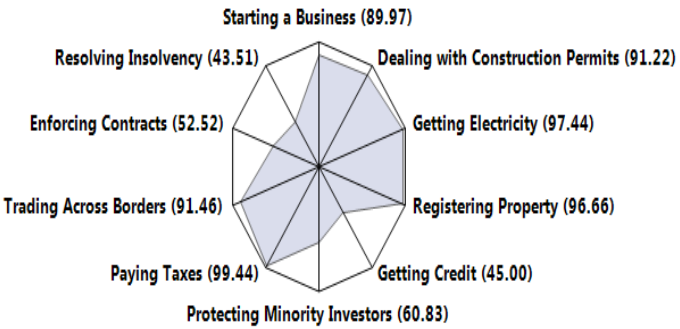
A review conducted to rank the ease with which one can do business in the UAE among the countries in the Middle East shows that the UAE has better ranking compared with other countries as shown in figure 5. The figure shows each of the requirements for starting a new business in the UAE and includes registering property, paying taxes, trading across borders, enforcing contracts, getting credit, resolving insolvency, and protecting minority investors (Terrados, Almonacid & Hontoria, 2007).
In addition, the ranking provides a clear indication of the strength of the UAE’s economy and the aggregate business ranking measures. The higher the number the better the performance and better the business environment in respect of the item being measured. For instance, by being assigned a credit of “45.0 and registering a business is assigned a rate of 96.66.
The figures imply that it is much better and easier to register a new business as compared to getting credit based on the economy frontier where o represents worst performance and 100 represents the frontier and the closer the measure is to 100, the better it is to the business frontier” (El-Sayegh, 2008). Typically, the “distance to frontier score captures the gap between an economy’s performance and a measure of best practice across the entire sample of 31 indicators for 10 doing Business topics although (the labour market regulation indicators are excluded)”.
In addition, the UAE is strategically located in the Middle East and offers good access routes for products and markets from and to Asia, Europe, China, and Africa which a total 40% of the global population that supports a GDP of US$5 trillion which offer significant economic opportunities (Zou & Cavusgil, 2002). In addition, the construction and oil and gas industry dominate the major industries that provide market for the PPE vendor machines in the Middle East and the UAE.
Growth strategy
The growth strategy will entail increasing the scale of operations for PPE Vendor Inc. into the local market and other Middle East markets. The growth strategy will involve effective utilization of resources to increase the sales volumes, increase the business capital to address the customer needs and expectations (Webster, 1991). The growth strategy will consists of both the internal and external growth strategies that are defined by unique elements as demonstrated in figure 6.
Figure 6
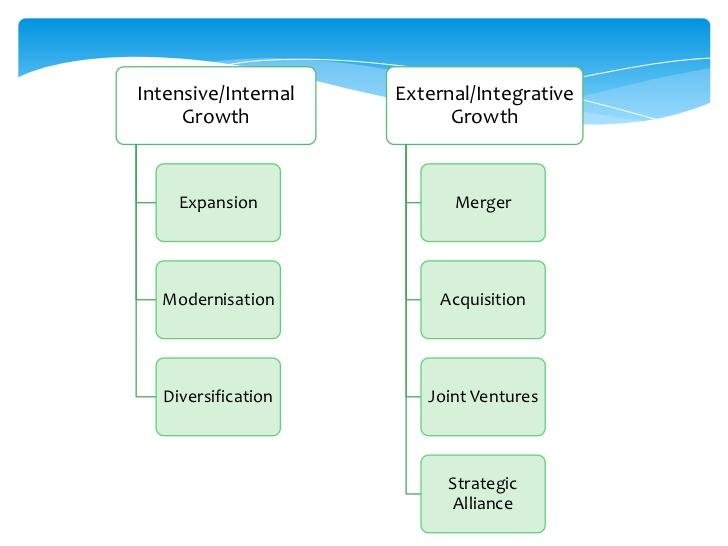
The internal growth strategy will consists of expansion, modernization, and diversification of the provision of PPE vendor machines in the UAE market. Here, the strategy will involve identifying the market needs, identifying new markets, and expanding into new markets based on the product market expansion grid in figure 7.
Figure 7
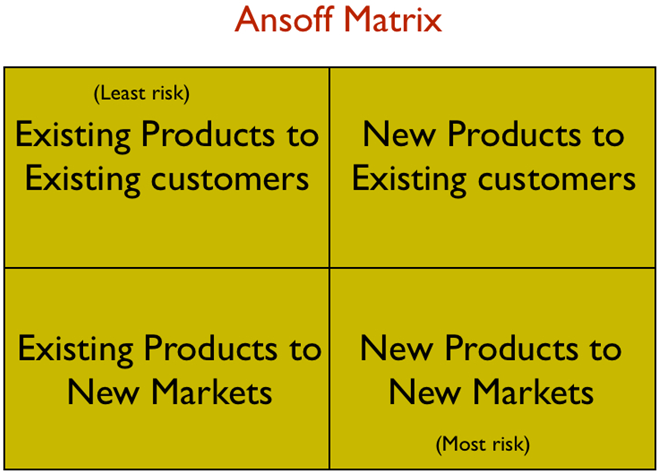
The matrix shows the product offerings to the customers is located in the first left corner showing the first step is to try to convince customers to buy the products. In addition, the company will focus on creating local and international markets by expanding outwardly.
The next step is to expand on the existing distribution channels by selling them in new markets throughout the UAE and the Middle East. On the other hand, the product development strategy will include introducing a wide range of products for customers to choose from into the market (Webster, 1991).
Risks and exit strategy
In theory, risks exist in the market and it is critical to identify them to develop risk mitigation strategies. In most cases, the risks can have serious, high, medium, or low severities depending on the operating environment (El-Sayegh, 2008).
To address the risks, the company will conduct a risk identification process, assign severities to the risks, and determine the risk mitigation strategies depending on the severity of the risks. Most of the risks to be identified include commercial, brand, environmental, legal, health and safety, equipment, and service delivery.
Conclusion
In conclusion, the business plan is about creating a market for PPE vendor machines in the UAE and the Middle East and a detailed analysis of the business environment, which shows an increasing demand of the machines because of the government rules and regulations.
In addition, the economic, legal, political, and social environments are favorable factors for setting up the proposed business. The company will optimise distribution channels to reach the local and external markets and increase the revenue from the sale of the machines in the markets. However, the risks are any but based on risk identification and mitigation strategies to enable the company formulate expansion and exit strategies from the market.
References
Al-Muhairi, B. S. B. A. (1996). The Islamisation of laws in the UAE: the case of the Penal Code. Arab Law Quarterly, 1(1), 350-371.
Al-Khouri, A. M. (2012). e-government Strategies The case of the United Arab Emirates (UAE). European Journal of ePractice, 1 (17), 126-150.
El-Sayegh, S. M. (2008). Risk assessment and allocation in the UAE construction industry. International Journal of Project Management, 26(4), 431-438.
Helms, M. M., & Nixon, J. (2010). Exploring SWOT analysis–where are we now?: A review of academic research from the last decade. Journal of Strategy and Management, 3(3), 215-251.
Jaffar, A., ElKhatib, H., Hesson, M., & Radaideh, M. D. (2007). A proposed strategic alignment of IS/IT with supply-chain management for UAE dates industry. Business Process Management Journal, 13(2), 247-262.
Leonard, B. (1996). Guide to Doing Business. New York: Diane Publishing.
Maamar, Z., & Sutherland, J. (2000). Toward intelligent business objects.Communications of the ACM, 43(10), 99-101.
Peter, J. P., Olson, J. C., & Grunert, K. G. (1999). Consumer behavior and marketing strategy. London: McGraw-Hill.
Randeree, K., Mahal, A., & Narwani, A. (2012). A business continuity management maturity model for the UAE banking sector. Business Process Management Journal, 18(3), 472-492.
Terrados, J., Almonacid, G., & Hontoria, L. (2007). Regional energy planning through SWOT analysis and strategic planning tools.: Impact on renewables development. Renewable and Sustainable Energy Reviews, 11(6), 1275-1287.
Webster, F. E. (1991). Industrial marketing strategy. New York: Wiley.
Wei, M, (2010). Construction of marketing management information system of travel agency based on customer relationship management. Advanced Materials Research, 1(136), 69-76.
Westwood, J, (2013). How to write a marketing plan, Kogan Page Publishers, London
Yüksel, I, (2012). Developing a multi-criteria decision making model for PESTEL analysis’, International Journal of Business and Management, 7(24), 24, 52
Zou, S & Cavusgil, S 2002, ‘The GMS: a broad conceptualization of global marketing strategy and its effect on firm performance’, Journal of Marketing, 66(4),40-56.